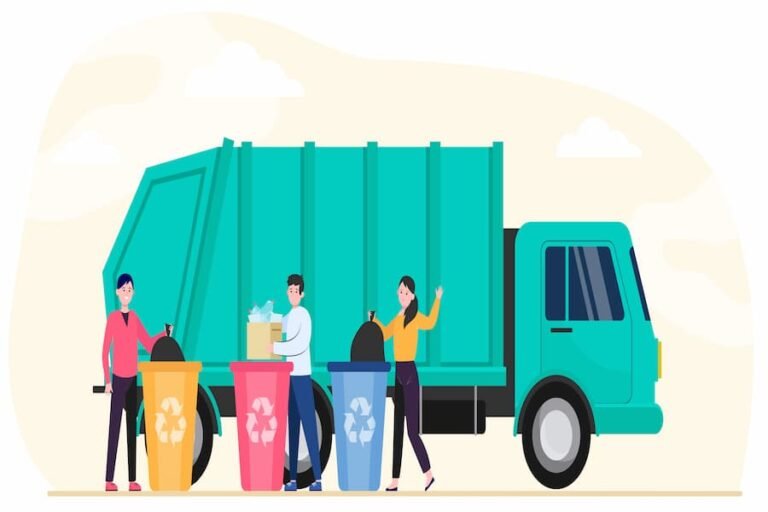Introduction
Commercial Waste – All companies need to practise effective waste management. In the commercial sector, waste disposal is about making sure a company is environmentally responsible and sustainable. Following best practices for commercial waste disposal helps companies to cut their environmental effect, follow rules, and save waste management expenses. The best methods that could result in more efficient, responsible, and affordable waste disposal are described in this article.
Developing a Waste Management Strategy
Any company that wants to successfully get rid of waste must first develop a thorough waste management plan. This approach should specify how waste is produced, sorted, stored, and finally disposed of. It should also have particular objectives like cutting waste, raising recycling rates, or lowering landfill contributions, along with collecting and disposing methods, such as small skip for hire. Some elements of a effective waste management strategy are as follows:
Conducting a Waste Audit
Reviewing the types and amounts of waste produced by a company constitutes a waste audit. This audit shows places where waste can be recycled, repurposed, or cut down. Tracking how much paper waste is produced helps companies to start paperless policies; seeing too much food waste helps them to use improved inventory control techniques to cut waste.
Setting Waste Reduction Goals
Improving a company’s waste disposal operations depends on defined objectives for cutting waste. These objectives can be lowering total waste by a specified percentage, raising recycling rates, or cutting energy use connected to waste processing. Measurable objectives help companies monitor development, spot opportunities for improvement, and inspire staff members to support sustainability initiatives.
Choosing the Right Waste Disposal Methods
A main element of the waste management plan is choosing suitable waste disposal techniques. For non-recyclable or non-hazardous waste, this can imply transporting materials to incinerator plants or land sites. But for recyclable materials, companies should work with recycling firms able to efficiently process and recycle commodities. On the other hand, hazardous waste has to be delivered to licensed facilities handling such items to reduce environmental and human health risk.
Recycling and Reusing
Responsible waste management depends much on recycling. Encouraging companies to recycle materials helps to lower the need for new raw materials and the quantity of waste sent to landfills. Using materials again helps to cut waste as well.
Partnering with a Recycling Company
Once materials are separated, they must be transferred to a recycling facility able to process them appropriately. Working with local or national recycling companies guarantees that items go to the appropriate facilities. Companies should seek for ones with a demonstrated history of sustainably recycling materials and making sure they are used again in the manufacture of fresh products.
Upcycling and Reuse
Promoting the upcycling or reuse of materials is another way to cut waste. Old office furniture or equipment, for instance, might be utilised rather than thrown away. This not only cuts the cost of buying new products but also lessens the waste going to landfills.
Managing Hazardous Waste
Companies handling hazardous substances have to adhere to rigorous disposal procedures to prevent human exposure or environmental contamination. Hazardous waste can consist of batteries, e-waste, chemicals, and other hazardous, flammable, or corrosive elements.
Labeling and Proper Storage
To avoid mistreatment, hazardous waste should be obviously marked and kept in safe, specified locations. Accidental spills or contamination are avoided by appropriate storage. Companies have to make sure these products are maintained away from non-hazardous waste and are disposed of by qualified waste disposal authorities.
Working with Specialized Disposal Services
Many enterprises have to work with specialised disposal firms to manage dangerous items. According to rules, these businesses have the knowledge and tools to make sure dangerous waste is disposed of correctly. These services could involve safe storage in a regulated facility, chemical neutralisation, or burning. Companies should check that their waste disposal allies are certified and licensed to manage dangerous items.
Waste-to-Energy Solutions
As a replacement way to get rid of non-recyclable waste, several companies are using waste-to-energy (WTE) technologies. Usually in the shape of electricity or heat, WTE is the process of turning waste materials into energy. By producing useful energy that may be utilised to run businesses or sold back to the grid, this approach helps to lower the quantity of waste transported to landfills.
Evaluating Feasibility
Companies have to assess whether a WTE solution is feasible for them before putting money into one. Among the elements to take into account are the type of waste generated, the amount of waste, and the possibility of energy recovery. Although WTE might be a good choice for certain companies, it might not be suitable for all sectors, especially those generating little waste.
Conclusion
Using best practices for commercial waste disposal helps the environment as well as a company’s bottom line. Proper waste management helps companies to follow rules, cut running expenses, and help to preserve goals. Companies can make great progress in enhancing their waste disposal methods by classifying waste, establishing clear management plans, recycling efficiently, managing hazardous materials correctly, and involving staff.
Visit The Morning Times for more informative blogs.
